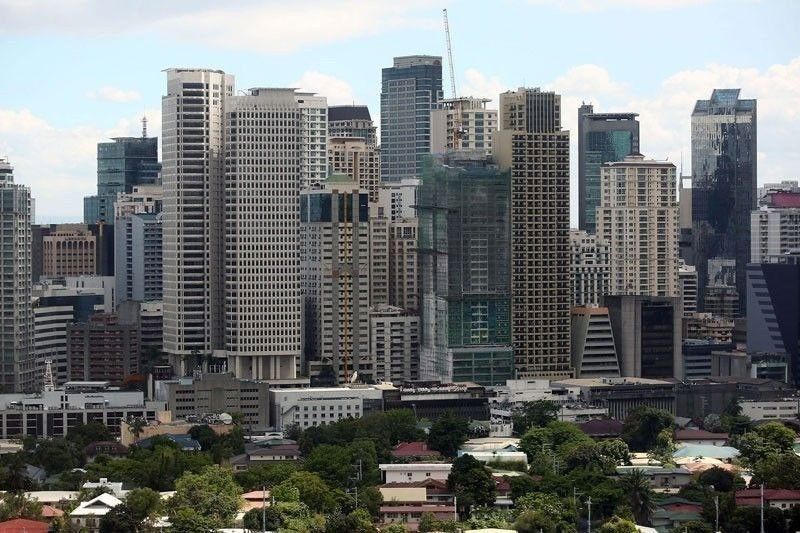Philippine debt swells to P13.4 trillion in 2022

MANILA, Philippines — The country’s outstanding debt soared to P13.42 trillion in end-2022, with its share to the overall economy easing to 60.9 percent following a strong performance last year. However, 2023 is expected to be a true test of growth momentum for the Philippines amid global headwinds.
Latest data from the Bureau of the Treasury showed that the national debt stood at P13.42 trillion at end-2022, 14.4 percent higher than the end-2021 level of P11.73 trillion.
For the six months in office of the Marcos administration, it added P627 billion in obligations. Nonetheless, the current debt stock is 99.9 percent of the P13.43 trillion expected debt pile by end-2022.
Following the over four-decade-high 7.6 percent gross domestic product (GDP) in 2022, the share of national debt to the country’s output eased to 60.9 percent from the 17-year high of 63.7 percent in the third quarter of 2022.
This was just slightly above the 60.4 percent debt-to-GDP ratio in 2021, but is significantly lower than the 61.8 percent target set under the medium-term fiscal framework.
Despite the seemingly good news, economists told The STAR that the government is in for a challenging year, as sustaining the debt-to-GDP ratio decline might be difficult given the expected economic slowdown here and abroad.
Reducing the debt-to-GDP ratio would mean that economic growth must outpace the level of borrowings of the Philippines.
The current debt-to-GDP ratio remains above the internationally accepted threshold of 60 percent, which still puts the Philippines at a vulnerable spot in terms of its capacity to pay off its financial obligations.
While the improvement in the debt-to-GDP ratio is welcome, ING Bank senior economist Nicholas Mapa said that the longer the country stays above 60 percent, the more it is susceptible to a credit downgrade.
“It is clear that the strategy for fiscal consolidation hinges on growth to hit or surpass the target. 2023 will likely prove a true test of whether the Philippines can hit growth targets again sans base effects and with the triple threat apparent,” Mapa said.
A fiscal consolidation could be a solution to balanced economic recovery and address a limited fiscal space, but such remains missing for the new administration.
“Other countries in the region, most notably Indonesia, have successfully completed their fiscal consolidation plan post-COVID. Our timeline suggests that we will only achieve this a couple more years from now,” Mapa said.
Union Bank of the Philippines chief economist Ruben Carlo Asuncion warned that headwinds, especially a risk of global recession, are expected to be more pronounced toward the middle of this year.
Asuncion maintained that stronger fiscal support may be needed and would put pressure on higher fiscal requirements.
“Government would need to anticipate and be able to buffer the economy from external challenges, and along the way secure economic growth for the year,” Asuncion said.
He added that the debt-to-GDP ratio may still increase, but it could be offset by the strengthening of the peso amid a weaker US dollar this year.
For Leonardo Lanzona, economist and professor at the Ateneo de Manila University, the current debt-to-GDP ratio may not be sustainable moving forward in light of the expected global economic downturn and the country’s propensity to import goods.
“There are two factors that could provide enough funds, but this administration wishes to avoid them. First, this administration has no intention of taxing the wealthy. Second, it has no plan to formulate new laws to eliminate corruption resulting in huge public resource losses,” he said.
“Without these elements, the debt-to-GDP ratio is expected to rise,” Lanzona said.
But Finance Secretary Benjamin Diokno is more optimistic, noting that the medium-term fiscal plan and strong GDP growth have allowed the government to outpace its borrowings.
“This gives us confidence that we can reach our targets by 2025,” Diokno said.
The administration targets to bring down the debt-to-GDP ratio to less than 60 percent by 2025 and further down to 51.1 percent by 2028.
“The country’s debt management strategy prioritizes the domestic market over external sources to protect the country against foreign exchange risk. Fluctuations in exchange rates run the risk of increasing debt service payments each time the peso depreciates,” Diokno said.
Meanwhile, data showed that for December, debt declined by P225.31 billion due to the effect of local currency appreciation against the US dollar, as well as net redemption of domestic government securities.
The peso appreciated 1.4 percent in December, ending the year at P55.815 versus a dollar, as against the P56.598 in end-November 2022.
The Treasury said the majority or 69 percent of the debt pile were domestic borrowings and the remaining 31 percent were sourced externally.
Total domestic debt at P9.21 trillion went down 2.3 percent on a monthly basis, but jumped 12.7 percent from the P8.17 trillion recorded in 2021.
The decrease was attributed to the net redemption of P215.95 billion in government securities while local currency appreciation against the US dollar trimmed P1.63 billion from the peso value of foreign currency denominated domestic debt.
External obligations, on the other hand, was almost flat at P4.21 trillion month-on-month, but surged 18.3 percent from the P3.56 trillion in 2021.
The Treasury said the lower external debt was due to the P58.34 billion impact of local currency adjustments on foreign currency debt valuation.
This offset the net impact of third-currency fluctuations against the US dollar amounting to P34.07 billion and the P18.54 billion net availment of foreign loans.
Meanwhile, total debt guaranteed obligations inched up by 2.8 percent to P399 billion due to the net availment of domestic guarantees amounting to P26.19 billion and the net effect of currency fluctuations that increased the value of external guarantees by P1.58 billion.
Domestic debt as a share of GDP went down to 41.8 percent while the proportion of foreign obligations decreased to 19.1 percent.
- Latest
- Trending





























